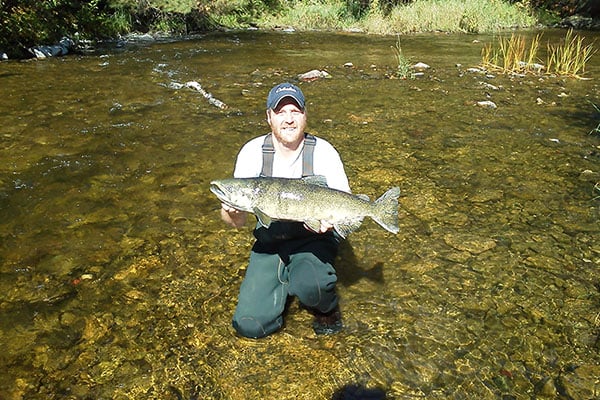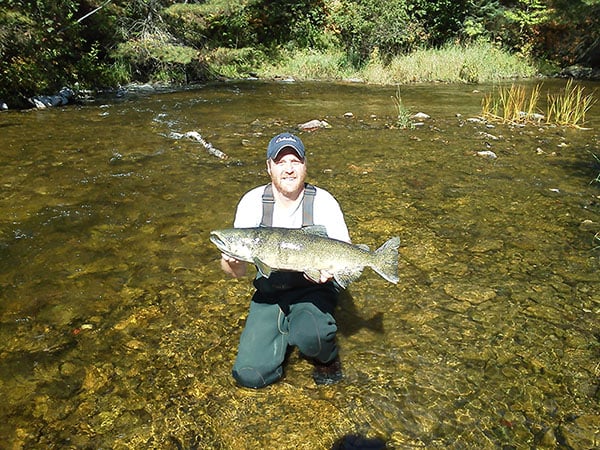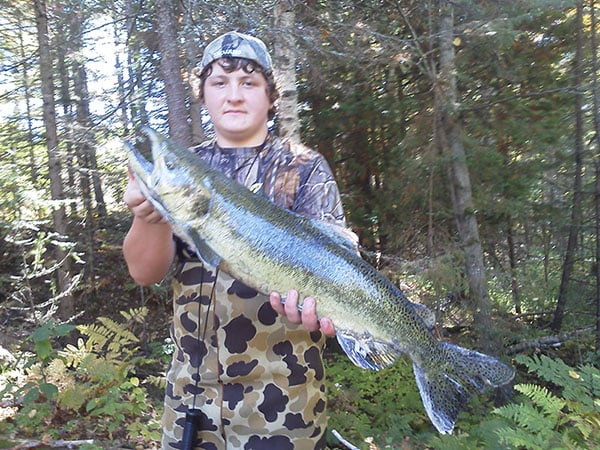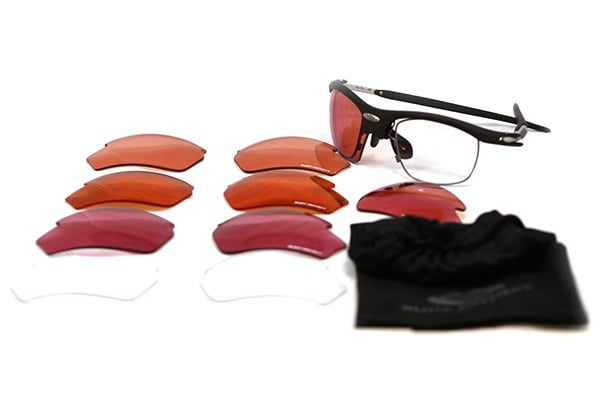Last Updated on
The icy water was pounding my waist, at times almost up to my chest. The things we do for our kids. If it weren’t for my insulated chest waders there’s no way this duck hunt would be possible. The late fall rain had filled the river to its carrying capacity, and our once easy paddle to get to our “honey hole” in the middle of the river looked more like a white water rafting excursion. The furiously flowing river wasn’t going to just let us paddle across like it used to. Either way, I wasn’t going to give up hope of a successful hunt this morning. So instead of canoeing over like I normally do, I hopped in the water, left the kids in the canoe and waded across.
After a great hunt with lots of shooting and laughs, I hopped back in the river and repeated the process, pulling the boys and the canoe back to civilization. I hopped out, slipped off my waders, and was thankfully dry as a bone and very warm. In fact, I was much warmer than the boys- who were simply wearing their camouflage hunting clothes. Once again, thank God for my waders.
Waders come in all shapes and sizes as well as serve many purposes. In the hunt I was just remembering, I was wearing my insulated chest waders- perfect for icy river fishing situations or waterfowl hunting.
For this piece we wanted to focus on waders- all the different options, combinations, and situations where someone would use them.
Sizes/Coverage
Probably the most common type of wader that people visualize when they hear the term are chest waders. All waders begin at the foot, and chest waders are worn high, at least to the mid chest if not lower neck. Chest waders serve many purposes. They are perfect for fishing in deep waters, and waterfowl hunting. Some hardcore deer hunters use waders as well to access that hard to reach, top secret place in the middle of nowhere. In fact, one famous deer hunting celebrity who will remain nameless told me once: “If I don’t have to wear waders to get to it… then I don’t hunt it.” Regardless of the situation, chest waders come in very handy. But… like anything, they are not perfect. Often hot and heavy, chest waders don’t help the users body breathe much. Also, there have been several situations where the fisherman or hunter wearing chest waders has drowned. Because chest waders usually come with two nylon shoulder straps that act like suspenders, and the full length of the user’s chest and legs adding friction, they aren’t always easy to slip on and off. What happens is that they get too deep, the rushing water fills the waders, and unless the wearer can unhook and wiggle out, they will be carried under water soon. A sad reality, but worth mentioning. Choosing to wear chest waders is a serious decision.
Another option is less aggressive waters are waist high waders. Generally used for fishing, waist high waders do exactly what they say- they go to the waist, and are worn similar to a pair of pants. Perfect for shallower streams, or getting into and out of boats, the waist high waders offer a few advantages over chest waders. First, they allow the wearer to experience much greater mobility. And second, they also allow the person wearing them to be exposed to the weather for comfort. Fishing in an icy mountain stream, on a 90 degree day with chest waders would be miserable. Fishing in that same stream, with waist high waders and a t-shirt sounds more like my idea of fun!
Once again, as the name implies, these waders go up to the fisherman’s hips. I say fisherman because generally these are also strictly used by fishermen. There are situations where a big game hunter or waterfowler may use these to stalk through some muddy ground, but generally hip waders are used by fishermen. Perfect for shallow streams and launching boats, hip waders are easy to take on and off. Also, they generally don’t interfere too much with the regular clothing the fisherman is wearing, because most of the person’s body is still exposed to the elements.
Construction/Purpose
Just as how not all waders are made for the same purpose, they are also not created from the same materials. Some are meant to be warm, some are meant to be light, and some are simply meant to be waterproof.
Neoprene waders are the most common in my neck of the woods for several reasons. First, the material is rugged and can withstand a lot of abuse. Also, they are warm. Neoprene waders come in different thicknesses, for the sunniest of summer days, to Mother Nature’s darkest of winter storms. We waterfowl hunters are crazy, and believe it or not… we like to hunt in dark, cold, nasty weather. That being said, we don’t like to freeze! Neoprene stretches to the body, allowing for a nice, warm and tight fit. Generally, when a wader needs to keep the person warm, they are made out of neoprene.
Breathable waders are a miracle of science. Created from a specialized material that locks out moisture- they also vent sweat and heat! So… on a super hot sunny day, when the bite is just right, a fisherman can be wading in chest high water, and feeling comfortable. It’s a miracle! Mainly designed for fishermen, the breathable material might not hold up as well for a flooded timber duck hunter. But when it’s warm, and the stream looks rather inviting, breathable fishing waders are the way to go.
With all that breathable waders can do… they never be called the cheapest. So… for the budget minded fisherman, nylon waders are a nice fit. Waterproof, but NOT breathable, they are still lightweight and flexible. Capable of everything a breathable wader can do, nylon just doesn’t vent internal heat well. For short trips, setting fishing docks, getting in and out of the boat, or when the weather is comfortable, nylon waders are a practically priced option.
Pretty much limited to hip style, rubber waders do still exist. Basically a gigantic rubber boot, they come in handy in certain situations. With advancements in technology, we generally don’t see many of these around anymore.
Boots or Stocking Feet?
The age old question for the wader fisherman or hunter… should I get mine with boots or stocking feet? Many waders come in two choices- with attached boots or one piece stocking feet. With an attached boot, some cost is saved because the user will not need to buy boots. And in some cases, the person won’t lose their boots either! Boot foot waders come with regular rubber bottoms or felt bottoms. The felt bottoms are best for traction on slippery rocks and such, whereas the rubber boot bottoms are best for timber, logs, and various other rougher situations. Boot foot waders do tend to keep the user warmer, with some boots being insulated themselves But… they are also prone to leaks at the seams between the boot and wader.
Stocking feet waders need to have an external boot or shoe worn over them before using. Once again, wading boots or shoes come with a rubber or felt bottom, for the same reasons as above. The adverse qualities apply as well. They will not keep the user as warm, but are less prone to leaking due to the fact that there are no seams for boots to be attached.
Conclusion
There are no hard and fast rules for purchasing a wader. We recommend you consider all of the options and think about how you plan to use them. Consider how you’ll transport and store them. Proper storage in the off season consists of the dry waders being hung in a same, temperature controlled environment.
One thing is for certain, waders can open up a whole world of options! Be careful using chest waders and no matter what you decide on, take good care of them. A well maintained set of waders will soon become your new best hunting or fishing buddy.














